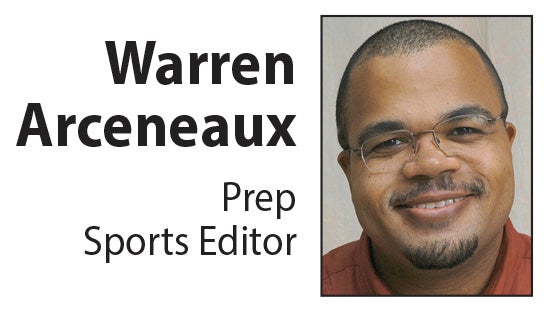Warren Arceneaux column: Ode to forgotten position
Published 1:00 pm Tuesday, October 25, 2022
As a young news reporter who only dabbled in sports many years ago, the first thing I would do after getting my weekly football assignment was check the stats to see if either team threw the ball much – with double digit passing attempts and/or 100 passing yards per game qualifying as “much.”
I dreaded games with good defenses and a perceived lack of action to write about.
Times have changed.
The proliferation of the spread offense has made big passing numbers and high-scoring games the norm. Quarterbacks have been transformed from trustworthy game managers who took care of the ball to athletic playmakers who have to be dangerous running and throwing. Wide receivers have grown in prominence, becoming at least as important as tailbacks, formerly the primary weapon in most offensive attacks.
It’s a different game, not necessarily better or worse, but my old soul does miss a lot about the old days. My biggest beef with the spread is that too many teams using it, meaning you don’t get the diversity of years past, where you might see the Wing-T, veer, classic I-formation or power-I any given week.
Other aspects of the old days I wish would make a comeback:
Circular huddles: This is partially self-serving, as the longer break between plays makes stat keeping and Tweeting a bit easier, but it is also aesthetically pleasing to see the quarterback run from the sideline into the circle, kneel down and call the play. It is reminiscent of playing in the yard as a kid and drawing up plays in the dirt.
This also relates to the worst part of the spread, teams lining up as if the play is about to start, then stopping and looking over to the sideline for assignments. Come on. It’s football. It’s not that complicated. Stop teasing the fans and get the play started.
Two-back formations: Whether it was the I or the split-back, pro-style attack, I just liked having two guys back there. It made everything seem so equitable and balanced, having two guys working together. One blocks for the other on one play, then vice versa. Bonus points for when the pair looked nothing like each other and/ or had differing playing styles, like one big bruiser and one small fast guy.
Which brings me to the worst development in modern football.
No more fullbacks: Fullbacks are/were the best – real fullbacks, that lined up in front of tailbacks. Not a guy back there by himself with wingbacks or slotbacks on either side. Big guys who wore numbers in the 40s and had shoulder pads so big they could be seen from space. Those were my favorite players. Quiet, involved in every play, making sacrifices for others, not in the limelight.
Nothing is better in high school football than seeing a big fullback bursting through the line for a big play. You get the added drama of wondering if he is going to run out of gas before he reaches the end zone. You get little guys on defense trying to decide if they are going to try to make the tackle or get out of the way. If you’re lucky you get the fullback carrying a few defenders on his back, because fullbacks are the best people and don’t get tackled by single defenders. We need to bring them back.
Shouts out to Kameron Suire of Rosepine and Thomas Brown of South Cameron, two of the best during my time here at the Press.
Former South Beauregard and Westlake head coach Shawn Demeritt, and fellow fullback aficionado points to the 1998-99 years as a golden era for fullbacks, with Jacque Mistric of Sam Houston, Stefan Bostick fo St. Louis and Dylan Fowler of South Beauregard as three of the best. Kelly Courville was another good one at South Beauregard. Joseph Pitre of Welsh was another good one from that era.
—
Warren Arceneaux covers high school athletics. Email him at warren.arceneaux@americanpress.com






